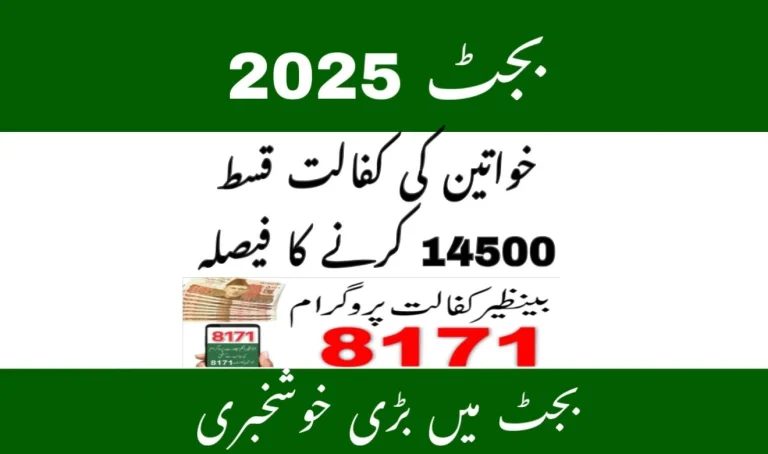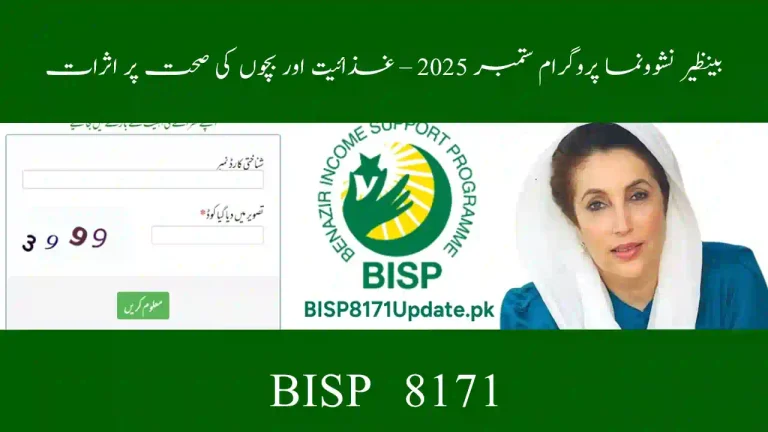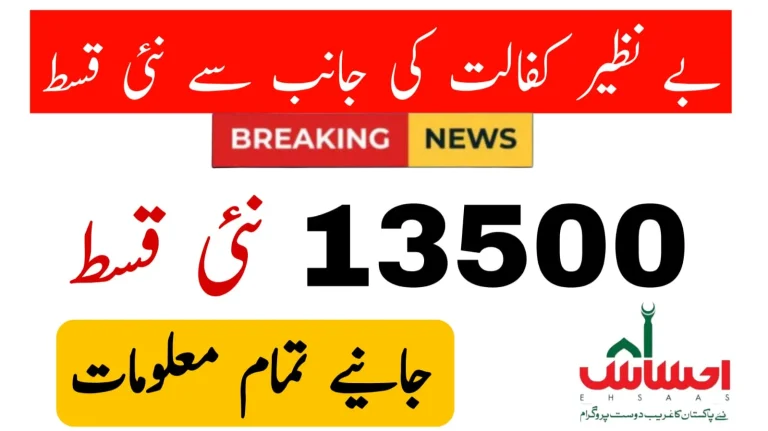BISP vs Other Welfare Programs in South Asia – Payment Comparisons

South Asia is one of the most populated regions in the world, with hundreds of millions of people living under conditions of poverty or near poverty. For these families, daily survival depends on access to food, shelter, and very basic healthcare. Rising inflation, lack of job opportunities, and frequent natural disasters make the situation worse.
To reduce inequality and provide financial relief, countries across the region have created social welfare programs. These programs are not charity; they are structured safety nets designed to protect vulnerable families when income is not enough to meet basic needs.
Among these, Pakistan’s Benazir Income Support Programme (BISP) stands out as one of the largest and most organized. However, India’s National Social Assistance Programme (NSAP) and Sri Lanka’s Samurdhi and Aswesuma programs also play crucial roles in their countries. Each program has different goals, payment structures, and levels of effectiveness.
This article provides a detailed comparison of BISP and its South Asian counterparts. It looks at their history, payment amounts, benefits, challenges, and overall impact on poverty reduction.
The Benazir Income Support Programme (BISP) – Pakistan’s Flagship Welfare Scheme
Origins and Purpose
Launched in 2008, the Benazir Income Support Programme was Pakistan’s response to rising poverty, food price inflation, and widespread economic hardship. It was named after former Prime Minister Benazir Bhutto and designed to provide direct cash transfers to poor families.
How It Works
- Payment system: BISP provides quarterly cash assistance, currently around PKR 8,500 every three months (about PKR 2,833 per month).
- Target group: Payments are made to female heads of households, giving women financial independence.
- Coverage: Initially 5 million families, now expanded to over 9 million households, making it one of the largest programs in South Asia.
- Selection process: Beneficiaries are chosen based on the Poverty Means Test (PMT) score, which measures income, assets, and household conditions.
Achievements of BISP
- Strengthened women’s role in family financial decisions.
- Helped millions of families pay for school fees, healthcare, and food.
- Improved access to banking and digital transfers, reducing fraud and middlemen.
Limitations of BISP
- Inflation has weakened the value of payments; what once covered a family’s needs for a month now barely lasts two weeks.
- Targeting errors: Some of the poorest families are excluded, while others who are not fully eligible still receive aid.
- Limited impact on nutrition: Studies show that while BISP improved spending on clothing and durable goods, it did not significantly change food security levels.
India’s National Social Assistance Programme (NSAP)
Background
India, with its vast population, has created several welfare programs. The National Social Assistance Programme (NSAP) was introduced in 1995 to provide a minimal level of social protection for vulnerable groups such as the elderly, widows, and persons with disabilities.
Key Features
- Payment system: Monthly pensions, usually between ₹300–₹500, though some states add extra funds.
- Beneficiaries: Elderly above 60, widows, and disabled individuals from families below the poverty line.
- Delivery system: Payments are deposited directly into bank accounts or delivered through local government structures.
Benefits
- Offers basic income security to those without family or community support.
- Recognizes the need for social pensions in a rapidly aging society.
- Provides widows with some independence and dignity.
Challenges
- The pension amount is too small to meet even minimal living costs.
- Many beneficiaries face payment delays due to bureaucracy.
- Coverage remains limited, and millions of poor elderly people do not qualify.
Sri Lanka’s Welfare Programs – Samurdhi and Aswesuma
Samurdhi Program
Sri Lanka has long recognized poverty as a structural issue. The Samurdhi Program is a key initiative that provides a mix of cash, training, and microfinance opportunities.
- Cash transfers: Low-income families receive monthly allowances.
- Microfinance support: Families can borrow small loans to start businesses.
- Livelihood training: Includes skill development and job opportunities.
- Coverage: Supports about 1.8 million families, nearly a quarter of Sri Lanka’s population.
Aswesuma Program
Aswesuma is a newer initiative aimed at making welfare more targeted and data-driven. It uses updated household surveys to ensure that benefits go directly to the poorest families.
- Focuses on transparency and eliminating political influence.
- Integrates modern digital payment systems to prevent corruption.
- Replaces outdated beneficiary lists with real-time household data.
Strengths and Weaknesses
- Strengths: Holistic approach combining cash support with opportunities for development.
- Weaknesses: Payments are small, and coverage is still not universal. Some families remain excluded despite being poor.
Comparing Welfare Spending Across South Asia
While these programs differ in design, they share a common weakness: South Asia spends too little on social protection compared to other regions.
- Average spending: Only 0.9% of GDP on social assistance, far below global averages.
- Informal workers and rural families often remain excluded.
- Many programs focus on basic cash handouts, without integrating health, education, or nutrition support.
Despite these challenges, the region has seen progress. Pakistan has improved digital payment systems, India has expanded direct transfers, and Sri Lanka is moving toward data-driven targeting.
Payment Comparison Table
| Country / Program | Frequency | Payment Amount | Target Group & Coverage |
|---|---|---|---|
| Pakistan – BISP | Quarterly | PKR 8,500 (~PKR 2,833/mo) | Over 9 million households; women-headed families |
| India – NSAP | Monthly | ₹300–₹500 | Elderly, widows, disabled below poverty line |
| Sri Lanka – Samurdhi | Monthly | Variable; plus microfinance | 1.8 million families; low-income households |
| Sri Lanka – Aswesuma | Targeted | Variable; updated system | Poorest households, modern data-driven approach |
Frequently Asked Questions
What makes BISP unique in South Asia?
BISP directly empowers women by transferring funds to female heads of households, giving them independence and financial decision-making power.
Does BISP reduce hunger in Pakistan?
BISP helps families manage expenses, but due to inflation, its impact on food security is limited. Payments often run out before the next cycle.
How does India’s pension scheme compare to BISP?
India’s NSAP provides much smaller amounts (₹300–₹500 per month), which is less impactful compared to BISP’s quarterly payment.
Which welfare program is the most holistic?
Sri Lanka’s Samurdhi and Aswesuma are broader because they mix cash assistance with training, microfinance, and job support.
Why do targeting errors happen?
Errors occur due to outdated surveys, poor administrative systems, and political interference in beneficiary selection.
Lessons for Improving Welfare Programs
- Update beneficiary data regularly to reduce errors.
- Increase payment amounts to match rising inflation and cost of living.
- Combine cash with services like healthcare, nutrition, and education.
- Use digital payment systems to reduce fraud and delays.
- Focus on women as primary recipients to promote gender equality.
- Track impact carefully by measuring improvements in poverty, nutrition, and education.
Conclusion
South Asian countries have made real progress in designing welfare programs, but major challenges remain.
- Pakistan’s BISP is one of the largest programs in the region, with relatively higher payments, but inflation reduces its effectiveness.
- India’s NSAP provides a regular pension, but the amount is too low to lift people out of poverty.
- Sri Lanka’s Samurdhi and Aswesuma combine cash with empowerment opportunities, showing that welfare can go beyond handouts.
For the future, these programs need to increase their budgets, modernize targeting systems, and connect cash with long-term development goals. Welfare should not just keep families alive; it should help them escape poverty permanently.
By learning from each other, South Asian countries can build welfare systems that truly protect dignity, reduce inequality, and empower their citizens.
Read this: BISP Payment Increase Rumors vs Reality – September 2025
Read this: What Happens to IPV When BISP Cash Transfers Stop?






